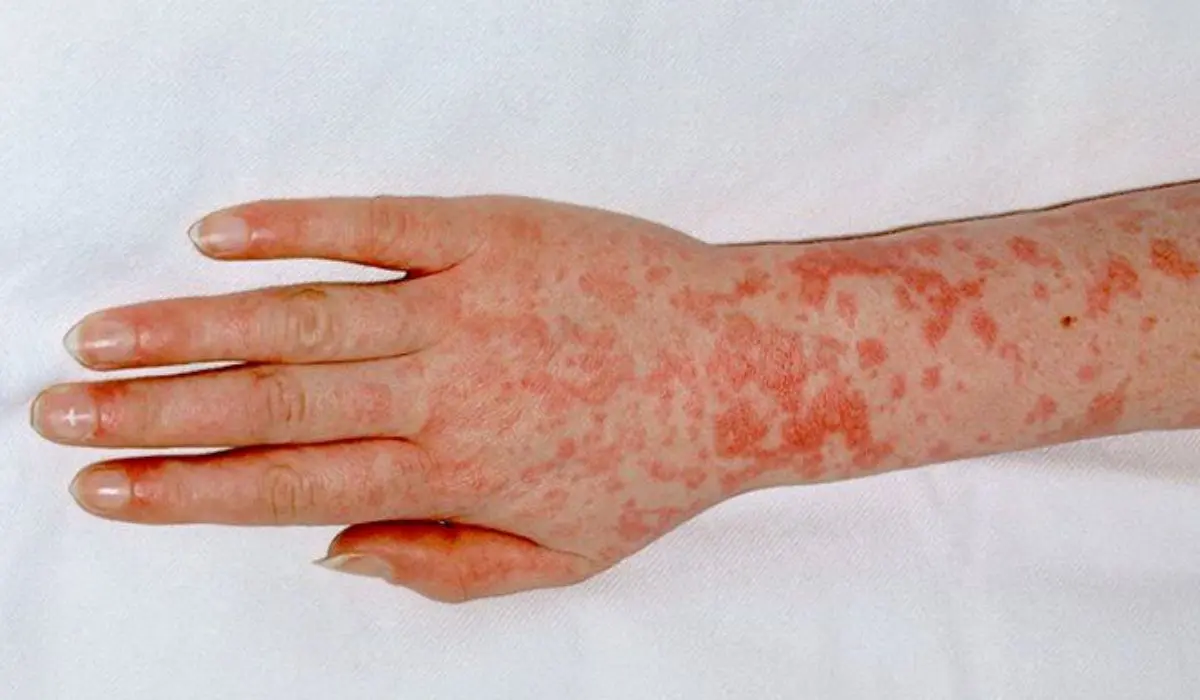Scarlet fever is a bacterial infection that has been a cause for concern for parents and healthcare providers for many years. While the disease is less common today than it was in the past, it still raises questions about its potential dangers .
Scarlet Fever explained
Scarlet fever is primarily caused by group A bacteria called Streptococcus, the same bacterial that is responsible for strep throat. It most commonly affects children between the ages of 5 and 15, although anyone can contract the infection. The disease got its name as a result of the rash and high fever that accompanies it.
Historical Background Of Scarlet Fever
In the era where antibiotics were absent like in the 1800s, infections due to Group A Streptococcal Bacteria were major causes of mortality and morbidity. In the period or days of scarlet fever being very active, 15%-20% died from being infected. Since the introduction of antibiotics, the mortality rate for scarlet fever has drastically reduced to 1%.
What Leads To Scarlet Fever?
Scarlet fever’s major cause is Group A Streptococcus Bacteria. This bacterium is responsible for various infections, including strep throat and can also lead to Scarlet Fever when certain strains produce a toxin known as erythrogenic toxin.
Below are ways scarlet fever develops:
- Initial strep throat infection: scarlet fever often begins as strep throat thereby infecting the throat and tonsils.
- Toxins production: streptococcal bacteria releases erythrogenic toxins which triggers a distinctive reaction in the body leading to scarlet fever.
- Immune system response: when the body immune systems respond to the infection, it therefore leads to scarlet fever.
Symptoms Of Scarlet Fever
- Red rash: one of the hall’s mark signs of scarlet fever is a red sandpaper like sign that starts from the neck and chest before spreading to other parts of the body.
- Sore throat: scarlet fever often begins with a sore throat that gradually gets worse leading to difficulty in swallowing.
- Fever: a high fever usually above 101°F(38.3°C) is common with scarlet fever.
- Reddish tongue: the tongue may appear bright red with small white spots, looking similar to strawberry.

Other symptoms include:
- Vomiting
- Headache
- Nausea
- Chills
- Swollen tonsils
Why Be Cautious Of Scarlet Fever?
The dangers of scarlet fever shows the need to be cautious. It is hazardous and fatal if not treated. No disease should be taken lightly rather all diseases should be tackled aggressively.
Scarlet fever is a serious illness but when properly diagnosed and treated with antibiotics like penicillin or amoxicillin it will be considered not dangerous. Therefore it will be important to properly treat this illness in order not to see the dangerous side of it. Using antibiotics will help to kill the bacteria responsible for the infection and reduce the risk of complications.
If Scarlet fever is left untreated, it can pose severe threats to health such as:
- Rheumatic Fever: untreated streptococcal infections, including scarlet fever, can increase the risk of developing rheumatic fever, which can cause heart valve damage.
- Kidney Problems: a complication known as streptococcal glomerulonephritis can occur leading to kidney inflammation.
- Abscesses: in rare cases, streptococcal infections may result in abscesses on all parts of the body.
Read More:- What Is Vasovagal Syncope And How To Prevent It?
How To Prevent Scarlet Fever?
Taking precautions to reduce the risk of streptococcal infections will help to prevent scarlet fever. Below are easy measures to take:
- Frequent hand washing: good hand hygiene can help prevent the spread of bacteria.
- Avoiding close contact: minimise close contact with someone who has scarlet fever until they have been on antibiotics for at least 24 hours .
- Immediate treatment: Seek medical attention if symptoms of scarlet fever become visible.
Self Care Measures
Majority of the symptoms of scarlet fever can be relieved using some simple self care measures which are:
- Drinking plenty of cool water.
- Eating soft food in order to relieve throat pains.
- Taking pain relief to bring down a high fever.
- To suppress body itching, use calamine lotion or antihistamine tablets.
Conclusion
Not all streptococcal infections result in scarlet fever. Only certain strains of the bacteria produce the toxins responsible for the distinctive rash and symptoms associated with scarlet fever. Early diagnosis and treatment will help to prevent complications and reduce the spread of it to others. Also, protection against this infection is necessary. Ensure to practise good hygiene, seek medical attention when necessary and complete antibiotic doses.